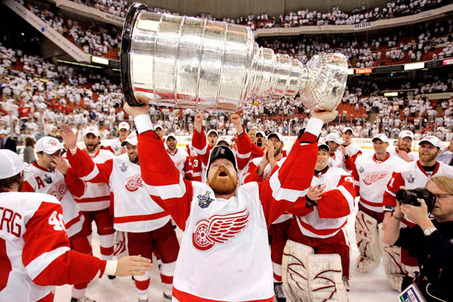It felt strange this week to hear Michigan State veteran Draymond Green claim that his Spartans “own” the state of Michigan. Equally bizarre was the feeling last month when Green’s hoops team failed to beat its archrival, the Michigan Wolverines, for the second straight time. But to those who have been paying attention recently, not much has followed the status quo in the Michigan – Michigan State rivalry.
It doesn’t feel right that Michigan State’s football seniors are one home win away from sweeping Michigan’s seniors.
It doesn’t feel right that the Wolverines are the ones counting down to October 15, receiving daily motivation to beat a team they’ve beaten nearly two-thirds of the time in their history.
On the other hand, it’s shocking to think that only four players on the Spartan basketball roster will enter next season with a winning record against the Wolverines (3-2), a team they have dominated since the late 90’s.
It’s surprising that the Maize ‘n Blue will have the more proven roster heading into next season and will be expected by many to outperform the Green and White for the second straight year.
And though all of these points are hard to believe, aren’t they, dare I say, fun? Isn’t it great for the rivalry to have the tables turned, and to change the old, tired arguments of “we’re a basketball school” and “we’re a football school?”
Doubtless, it angers Michigan fans that their tradition-filled football program is struggling. And it infuriates Michigan State devotees that Coach Izzo’s machine did not produce this season. But, what can be better for a rivalry than anger? Anger means people are emotionally involved. It means there’s something at stake. It means it matters.
And guess whom we have to thank for this resurgence in the rivalry? Each other. Yup. Fans of the rivalry need to admit that, on some level, we need each other.
Fans in Ann Arbor should actually be grateful for MSU football coach Mark Dantonio. Why? Because he beats them – three straight times, in fact. And guess what those bitter defeats create? Hate. Resentment. Annoyance. And an urgency to beat their intrastate rival.
Similarly, the folks in East Lansing should appreciate what Michigan basketball coach John Beilein has done for the rivalry. Specifically, he led his team to a season sweep of the Spartans for the first time since 1997. And how have Michigan State fans responded? With disbelief. With disgust. And with a revenge factor that has not been present on that side of the basketball rivalry in quite some time.
Certainly, coach Dantonio has done more to turn the tide of the football rivalry than Beilein has done on the basketball side of things, but both coaches have done a lot to earn the respect of their own fan bases, while gaining the disdain of their rivals.
Michigan fans hate Dantonio’s scowl, and they hate his public comments. But even more, they hate his record against them (3-1), his improved recruiting, and the positive vibe he’s created in the state of Michigan.
Conversely, Michigan State fans scoff at John Beilein’s clean-cut image, and they despise the floppy-haired, baby-faced guys on his team. But what they really can’t stand is that Michigan basketball is becoming relevant again (NCAA tourney wins in 2 of its last 3 years), and that Michigan point guard Darius Morris actually had something to talk trash about in March.
The reality is that hatred, when controlled, is good for a rivalry. It may even be necessary.
Furthermore, recent events in the rivalry have taken away each fan-base’s sense of security. Gone are the days when Spartans and Wolverines alike can defend a loss by saying, “Just wait until (insert dominant sport here) season.” Fans simply don’t know what to expect anymore. And for those willing to embrace change, that may just be a great thing.
El Maestro







